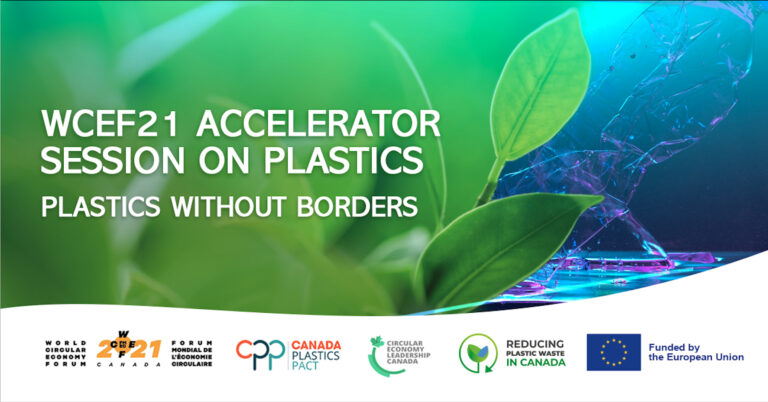
Held on September 15, 2021
Organizers: This WCEF2021 Accelerator Session was hosted by Canada Plastics Pact, Circular Economy Leadership Canada, and Reducing Plastic Waste in Canada. This Accelerator Session was funded by the European Union.
Description:
While there are successful national policies to reduce some plastic waste, many challenges remain to creating efficient circular economies that compel cross-sector and cross-border collaboration. This session was an opportunity for deepening the dialogue on the global and regional challenges and solutions.
This public event was designed to engage business leaders and policy makers familiar with reducing plastic waste, and who have taken action to create a circular plastics economy.
Join our mailing list